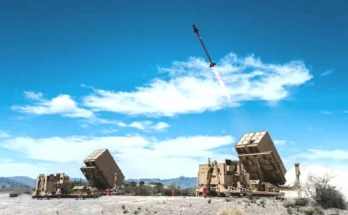
India’s efforts to bring the Vikrant on line were given added urgency with the Chinese commissioning of the aircraft carrier Shandong in December 2019. In January 2020, the Indian Ministry of Defence sent a sternly worded reminder to the shipyards and component suppliers involved in construction of the Vikrant that this program had already experienced too many delays and that further impediments would not be tolerated. The Vikrant was commissioned in September 2022, in time for the Chinese carrier program to have commissioned three carriers. On the simple metric of hulls-in-water, India is falling behind.
The problem facing India’s carrier program is that only one domestic shipyard slip is capable of building the ships. Therefore, each aircraft carrier must be launched and the slip cleared before the next can be laid down. In contrast, China has three yards capable of building large aircraft carriers, two of which are already doing so. To make matters worse, the Indian Navy now recognizes that the Vikrant likely will not be fully combat fleet operational until mid-2023.
The Chinese program has not been free of difficulties either. China’s economic performance has faltered in recent years, and the COVID-19 pandemic has caused further economic harm – although to what degree is a matter of dispute. Added to this situation is the limited technology base upon which China and India are establishing their construction programs. Both the Indian Vikramaditya and the Chinese Liaoning are extensively rebuilt versions of Soviet Navy Project 1143 carriers, and their actual combat value is disputed. To establish a viable aircraft carrier fleet, both nations will have to move beyond this restricted technology base.
The future INS Vishal is nominally a member of the Vikrant class but will be a much larger ship, with the capability to launch naval aircraft by catapult. This puts it in a different category from the new Vikrant and represents a major step forward in Indian naval aviation. However, the early stage of design suggests it will be a long time before the Vishal is ready to join the fleet.
The Indian Navy has now settled on a fleet that consists of three carrier groups in service at any one time, versus the two groups previously proposed. The original plan would have required a third undergoing maintenance and refit at any one time. The three-group fleet will require at least two additional carriers to cover maintenance periods and undertake training duties. Even if Vikramaditya is one of these ships (most likely the training ship), the program for carrier construction has broadened significantly.
The Vishal is expected to be completed around 2035. The third carrier, Viraat, is now so unlikely that it has been pushed to possibly 2045.
Forecast International’s Warships Forecast covers the key submarine, aircraft carrier, surface combatant, amphibious warfare, and underway replenishment programs that will dominate the warship industry over the next decade and beyond. It details the market impact of numerous key programs, including the Franco-Italian FREMM class frigate, the Queen Elizabeth class aircraft carrier, and the SSN-774 Virginia class submarine. Each report contains a full design history of the ship, an extensive list of major contractors and subcomponent suppliers, and a wealth of information on the ship’s performance and operational capabilities. Click here to learn more.
For more than 30 years, Richard has performed numerous roles as a top analyst for Forecast International. Currently, Richard is the Group Leader and Lead Analyst for Forecast International's Traditional Defense Systems, which covers all aspects of naval warfare, military vehicles, ordnance and munitions, missiles, and unmanned vehicles.
Having previously been Forecast International's Electronics Group Leader for 20-plus years, Richard established Electro-Optical Systems Forecast, as well as having been the prime editor of Electronic Systems Forecast, Land & Sea-Based Electronics Forecast, and C4I Forecast. Additionally, Richard has served as the Naval Systems Group Leader responsible for Anti-Submarine Warfare Forecast andWarships Forecast.




